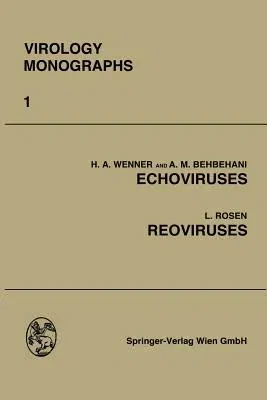Herbert A Wenner
(Author)Echoviruses and Reoviruses (Softcover Reprint of the Original 1st 1968)Paperback - Softcover Reprint of the Original 1st 1968, 1 January 1968

Qty
1
Turbo
Ships in 2 - 3 days
In Stock
Free Delivery
Cash on Delivery
15 Days
Free Returns
Secure Checkout
Part of Series
Virology Monographs Die Virusforschung in Einzeldarstellunge
Print Length
108 pages
Language
German
Publisher
Springer
Date Published
1 Jan 1968
ISBN-10
3662238772
ISBN-13
9783662238776
Description
Product Details
Book Edition:
Softcover Reprint of the Original 1st 1968
Book Format:
Paperback
Country of Origin:
US
Date Published:
1 January 1968
Dimensions:
23.39 x
15.6 x
0.61 cm
ISBN-10:
3662238772
ISBN-13:
9783662238776
Language:
German
Location:
Berlin, Heidelberg
Pages:
108
Publisher:
Weight:
172.36 gm

